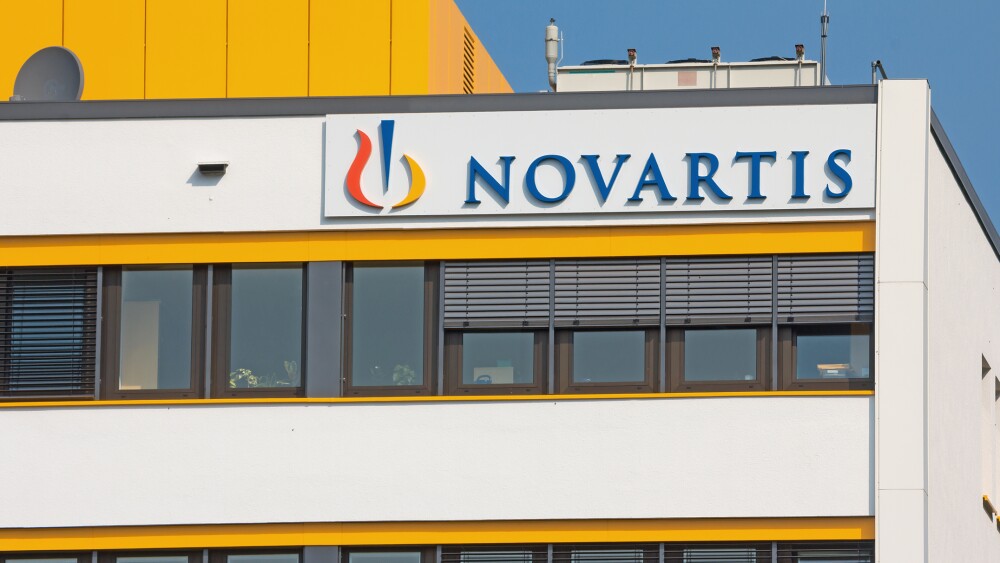Merck’s Keytruda may be the most talked about drug facing loss of exclusivity but it’s far from the only one, as several of the industry’s top-performers are losing key market protections. Some companies are more prepared than others.
Biopharma is being battered by patent headwinds that are the strongest they’ve been in nearly 15 years.
That’s according to a report last month from analyst firm William Blair, which estimates that from 2023 through the end of 2025, nearly 50 products will have lost patent protections—in turn eroding the aggregate sales of these drugs from $162.8 billion in 2025 to just $67 billion in 2029.
“We believe the biggest headwind to large pharma revenue growth over the next five years is loss of exclusivity,” William Blair analysts wrote in the report.
The patent cliff is exactly that: a cliff. Take AbbVie’s Humira, for instance. The immunology juggernaut is one of the most high-profile drugs to go off patent in recent years after topping the list of pharma’s highest selling drugs for much of its blissful patent-protected period. AbbVie recorded sales of $21.24 billion in 2022. The year after, sales were $14.04 billion and last year just $8.99 billion. To patch the hole, AbbVie has leaned on its new immunology stars, Skyrizi and Rinvoq, which brought in $11.72 billion and $5.97 billion globally in 2024, respectively.
Five industry powerhouses will see the same challenge in the coming years, as potential biosimilar and generic competition threaten sales. According to William Blair, the loss will affect assets that accounted for more than 30% of the collective revenues from Bristol Myers Squibb, Pfizer, AstraZeneca, Novartis and Regeneron in 2024. In this article, BioSpace looks at five pharma players—and one honorable mention—facing the greatest loss of sales in the coming years and how they’re planning to replace the revenue.
Merck Set to Lose Exclusivity for Keytruda, Seminal PD-1 Inhibitor
Assets at risk: Lenvima (2025), Januvia and Janumet (2026), Lynparza (2027), Gardasil/Gardasil 9 (2028) and Keytruda (2028)
Perhaps the most talked about patent cliff belongs to Merck’s blockbuster cancer therapy Keytruda, one of the industry’s highest-earning assets with more than $29 billion in sales last year. Keytruda faces a key patent expiry in 2028.
To help shore up the drug’s sales, Merck is gearing up for regulatory discussions about its subcutaneous formulation of the PD-1 blocker. If successful, the product’s launch could lessen the grade of the patent cliff the company inevitably faces.
Aside from subcutaneous Keytruda, Merck is leaning on its pulmonary hypertension therapy Winrevair, which according to William Blair will be the pharma’s “main driver of growth,” expecting $4.9 billion in sales in 2029.
Other Merck assets set to encounter patent headwinds in the coming years include the cancer drug Lenvima later this year, Gardasil/Gardasil 9 in 2028, the diabetes drugs Januvia and Janumet in 2026 and the cancer therapy Lynparza in 2027.
Bristol Myers Squibb Cuts Costs and Jobs in Face of Three Impending Cliffs
Assets at risk: Yervoy (2025), Eliquis (2026) and Opdivo (2028)
As in the case of Regeneron, BMS is set to lose key protections for one its most valuable assets. Eliquis, an anticoagulant for the prevention of stroke, made over $13 billion in 2024.
Ahead of the loss of exclusivity in 2026, several generics have already secured the FDA’s approval. These include copycats from Mylan Pharmaceuticals and Micro Labs Limited, which the FDA greenlit in December 2019. BMS and its partner Pfizer have put up a strong legal effort to stall these generics, securing a critical court win in August 2020 that would let them keep the market to themselves until 2026.
Still, the pressure is on for BMS to find alternative sources of revenue, especially because its cancer therapy Yervoy faces loss of exclusivity even sooner—this year. Yervoy brought in $2.5 billion for the pharma in 2024.
According to William Blair, BMS is unprepared for the cliffs its facing, “despite several recent notable acquisitions, there is not much to get excited about in Bristol Myers’ late-stage pipeline,” the firm wrote. BMS’s most standout asset is the PD-1 blocker Opdivo, which likewise faces key expiries in 2028, though a recently approved subcutaneous formulation could help buoy growth through this point and beyond.
Instead of beefing up its pipeline, BMS has chosen to weather the storm with cost-cuts. In April 2024, the pharma kicked off a sweeping realignment program—which includes around 2,200 layoffs—with an eye toward saving up to $1.5 billion through 2025. In its full-year 2024 business report earlier this month, the company tacked another $2 billion to the cost-cutting goal, which it hopes to realize through 2027.
Eliquis Tops Pfizer’s List of Patent Problems
Asset at risk: Prevnar (2026), Ibrance (2027), Xtandi (2027) and Eliquis (2028)
Eliquis’ loss of exclusivity could be even more painful for Pfizer, the prospects of which William Blair called “bleak” in its report.
In 2024, Eliquis emerged as Pfizer’s top-performing asset, growing 10% year-on-year operationally to bring in $7.4 billion. But the product faces loss of exclusivity in April 2028, with several generics waiting to eat into its sales. Compounding the company’s revenue problem is the fact that Eliquis was named among the first 10 drugs subject to price negotiations with the Centers for Medicare & Medicaid Services (CMS) prescribed by the Inflation Reduction Act (IRA), with the discounted negotiated price to go into effect in 2026.
Pfizer has several other assets that are set to lose key patent protections in the coming years, too, including the pneumonia shot Prevnar in 2026 and the cancer drugs Ibrance and Xtandi, both in 2027.
Erosion in sales is just one of Pfizer’s problems, which also include an activist investor jockeying for control and an unreliable COVID-19 market dynamics. There’s also what William Blair called an “underwhelming legacy pipeline.”
Seemingly aware of its precarious position, Pfizer sought to shore up its bottom line with an aggressive and sweeping cost-cutting measure. The savings program announced in October 2023 was designed to help the company lower its spend by $3.5 billion last year, while a more recent round in May 2024 set a $1.7 billion savings target by the end of 2027.
Aside from cost-cuts, the pharma is also banking on several 2025 catalysts—including up to four regulatory decisions—that could position the pharma for better growth in coming years, according to its fourth-quarter business report. Commercially, Pfizer is leaning heavily on its antibody-drug conjugate Padcev, which CEO Albert Bourla told investors was “an important growth driver.”
The company is expecting additional data for Padcev later this year that could open a path for approval in muscle-invasive bladder cancer. If approved, that indication “would nearly triple the total addressable patients in the U.S.,” Bourla said.
AstraZeneca’s Plan for Reaching $80B in Revenue Despite Expiries
Asset at risk: Farxiga (2025), Soliris (2025)
In May 2024, AstraZeneca unveiled an ambitious plan to deliver $80 billion in total annual revenue by 2030—a goal that could be crippled when Farxiga loses key patent protections later this year. In 2024, the drug brought in $7.7 billion, corresponding to 31% year-on-year growth at constant currencies.
Soliris, a key rare disease asset that brought in nearly $2.6 billion in 2024, is also facing loss of exclusivity and is expected to face biosimilar challenge this year.
Still, the pharma appears well-positioned to hit its 2030 target. As per William Blair, AstraZeneca has done a “commendable job” of building out its product portfolio, particularly in the oncology space. Enhertu, a Daiichi Sankyo-partnered antibody-drug conjugate (ADC), recently won broad approval in breast cancer. Enhertu will retain crucial patent protections past 2030, according to William Blair.
Other cancer standouts include Tagrisso and Imfinzi, which respectively made $6.58 billion and $4.72 billion in 2024.
AstraZeneca also boasts its clinical pipeline, which could bear fruit in the near-future. In a media call ahead for the pharma’s fourth-quarter earnings report, Chief Finance Officer Aradhana Sarin called 2025 an “unprecedented catalyst-rich period” for AstraZeneca.
In particular, the company is awaiting key readouts for several of its products, including not only Enhertu and Imfinzi but also the recently approved Datroway and asthma treatment Fasenra. AstraZeneca is also expecting crucial data for new assets such as camizestrant for different cancers and baxdrostat for hypertension.
“The value of our pipeline has been increasing, and now we have more than 90 late-stage studies underway, with an average peak-year revenue potential of over $1 billion,” Sarin said.
Novartis Struggles to Maintain Entresto’s Exclusivity
Assets at risk: Entresto (2025), Xolair (2025), Jakafi (2026), Cosentyx (2029) and Tafinlar (2030)
Novartis’ patent problems escalated in 2024. The heart failure drug Entresto, which made $7.8 billion last year, is set to lose market exclusivity in July 2025. The pharma started efforts to guard its place in the market as early as September 2022, when it filed a citizen Pptition to the FDA asking the regulator not to approve drug applications referencing Entresto and specific patents related to it. But last July, the FDA denied the petition, noting that it is possible for generic drugs to sidestep Entresto’s patents with labeling tweaks.
The same month, the FDA signed off on MSN Pharmaceuticals’ generic version of Entresto. Those decisions have since opened a legal saga for Novartis, which most recently secured a last-minute stay against MSN’s copycat, preventing its market entry while the pharma’s patent complaint remains open.
In its fourth-quarter and full-year 2024 earnings call last month, company executives expressed confidence that Novartis would be able to smoothly weather Entresto’s loss of exclusivity in mid-2025. The company expects to “secure pediatric exclusivity” for Entresto, which could potentially help soften the blow of generics this year, CEO Vas Narasimhan said during the call.
Aside from the heart failure drug, Novartis is also facing down patent expirations for Xolair in 2025, Jakafi in 2026, Cosentyx in 2029 and Tafinlar in 2030. Ilaris, indicated for auto-inflammatory diseases, lost key protections last year, while chronic myeloid leukemia drug Tasigna became open to generic erosion in 2023.
Much of Novartis’ resilience through the patent expiries will come from fiscal discipline, Chief Financial Officer Harry Kirsch explained during the call.
Honorable Mention: Regeneron’s High-Dose Eylea Not Making Up for LOE
Asset at risk: Eylea (2024)
Regeneron is already in the throes of a major patent expiry for its blockbuster eye disease drug Eylea, which in 2024 was the pharma’s top-performing asset with $5.97 billion in sales in the U.S. But last May, the company lost key protections for the drug, thereby opening it up to considerable copycat competition.
And of these, there are several. The same month Eylea went off patent, the FDA signed off on two interchangeable biosimilars, Biocon Biologics’ Yesafili and Samsung Bioepis and Biogen’s Opuviz. A few months later, Novartis spinoff Sandoz also won the regulator’s go-ahead for its own biosimilar called Enzeevu.
To help protect Eylea’s place in the market, Regeneron has taken many of its competitors to court. In December 2023, the pharma sued Samsung Bio for alleged patent infringement. Regeneron also has a case against Sandoz, seeking to block the generics developer from marketing its biosimilar.
The pharma has also developed a high-dose (HD) version of Eylea to keep the product’s competitive edge. The product earned the FDA greenlight in August 2023, but uptake has been slow. In the fourth quarter of 2024, Eylea HD’s sales came in at $305 million, below analyst expectations of $336 million.
In the pharma’s earnings call, CEO Leonard Schleifer urged investors to “look beyond” its Eylea franchise, noting that “our strategy is not to be solely dependent on any one thing.” In 2025, Regeneron is looking forward to the launch of its anti-IL-4/IL-13 antibody Dupixent in chronic obstructive pulmonary disease, as well as several key data readouts.






